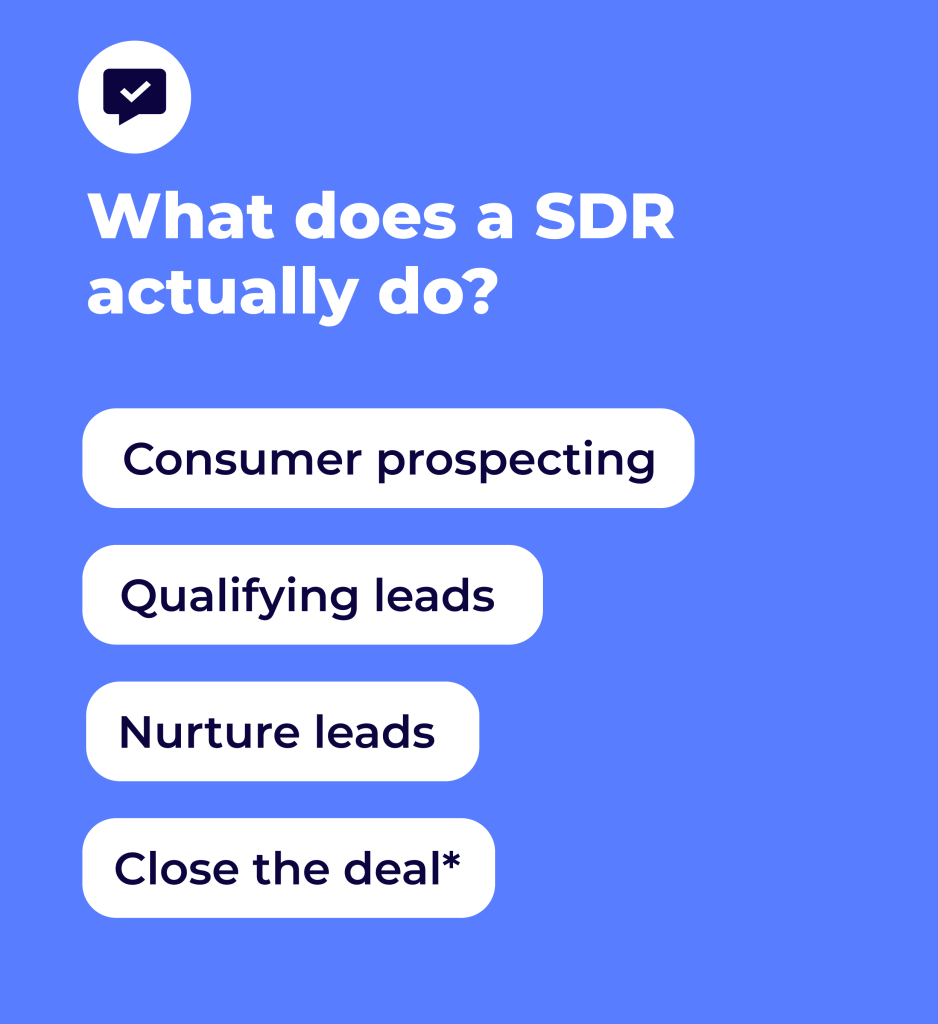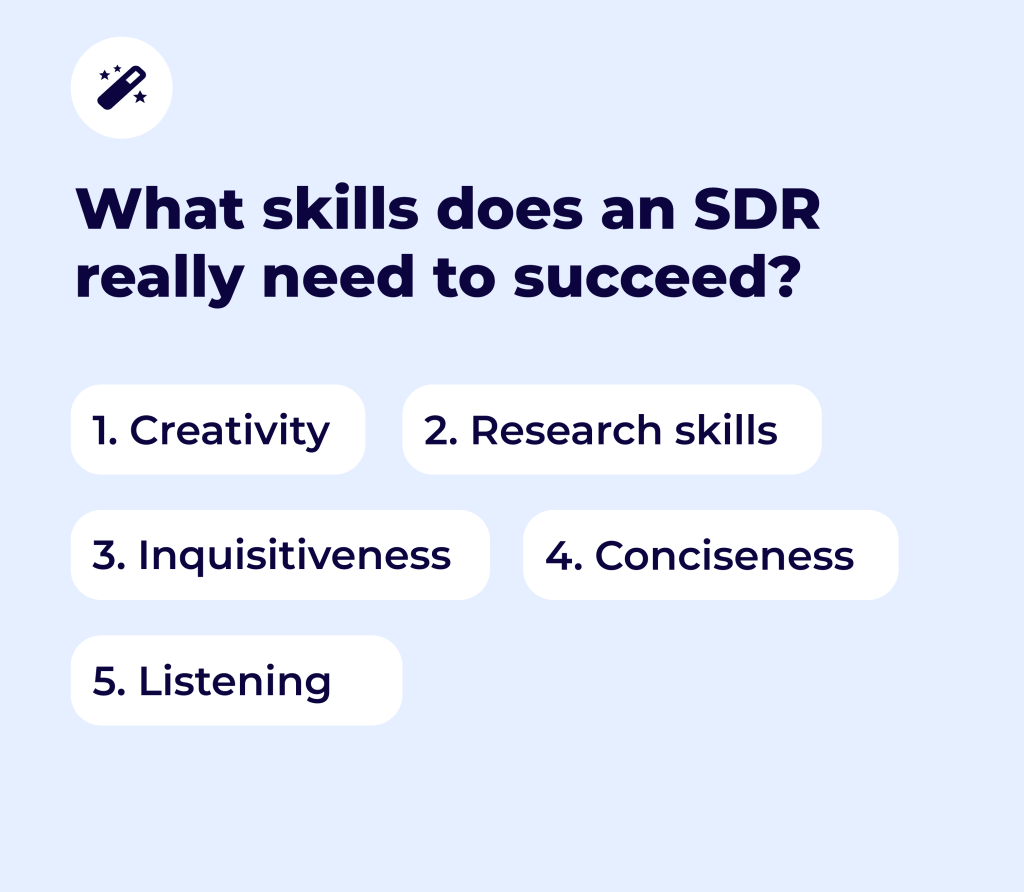When it comes to a company’s success, sales development is the lifeblood that provides valuable insights into consumer behavior and habits. This crucial behind-the-scenes work has a direct impact on the entire team, opening (or closing) doors that will ultimately expand the customer base.
Within this umbrella, the sales department representative or SDR plays a critical role in managing consumer outreach and guiding potential customers through the sales pipeline.
In this article, we’ll explore the role an SDR plays in growing a company’s customer base, including the sales development representative job description and how you can become a highly successful SDR.
So, what exactly does an SDR do, and why is this role so crucial?
What is a Sales Development Representative? [SDR meaning]
It’s simple—SDR stands for sales development representative.
The SDR works within the sales development team, playing an important role in customer engagement and understanding. An SDR job is one of the most important parts of any successful business as it helps drive sales and points the company in the right direction when it comes to connecting with customers.
Let’s break it down—what does an SDR actually mean in the world of sales?
What is SDR in sales?
An SDR is a professional tasked with generating sales for a company by gaining a deeper understanding of the consumer and their needs. An SDR job involves interacting with potential customers, gaining market research into the consumer mindset, and helping close sales through follow-ups.
The SDR has the crucial task of connecting with customers in order to gain more leads for the company. It’s not overstating that the SDR job can truly make or break a company.
Wondering why having an SDR team can be a game-changer for your business?
Why does your business need an SDR team?
An SDR team is an invaluable resource and a crucial part of a company’s sales process.
They are the ones that create a comprehensive sales pipeline through lead generation and conversion. An SDR team can generate up to 55% of sales, increasing productivity, boosting ROI, and creating a loyal customer base.
Not sure if it’s time to bring on SDRs? Here are the signs you shouldn’t ignore.
When is the right time to hire an SDR team?
Knowing when to hire an SDR team can make a significant difference in your business growth. Here are some clear signals it might be time:
Your marketing team is overwhelmed with inbound leads
If your marketing team is struggling to track, qualify, and respond to all the inbound leads coming their way, it’s a sign you need dedicated SDRs to manage this critical process.
If leads are slipping through the cracks or responses are delayed, you’re likely missing valuable sales opportunities.
SDRs specialize in promptly engaging leads to ensure none go cold, turning interest into booked meetings.
Your speed to lead is slowing down
Speed is crucial in sales.
If you’re noticing that it’s taking longer to follow up with new leads—whether inbound or outbound—you’re likely losing deals to faster-moving competitors. An SDR team ensures that leads are followed up on quickly and consistently, which is vital for converting high-quality prospects.
You need to scale your sales pipeline
If your current lead sources are running dry or your sales pipeline isn’t as fresh as it used to be, an SDR team can help by proactively generating new leads. They’ll work on outbound strategies and find new prospects to keep your pipeline full, ensuring you’re not relying solely on inbound marketing to drive sales.
![What Is the SDR Role (and What It’s Not)? [2025 Version] What Is the SDR Role (and What It’s Not)? [2025 Version]](https://reply.io/wp-content/uploads/sdr.role_-1080x567.jpg)






